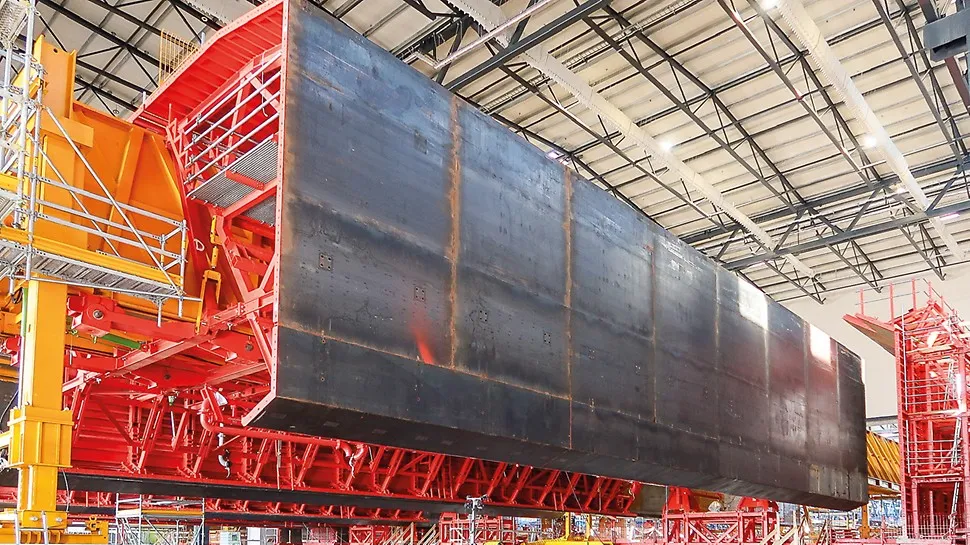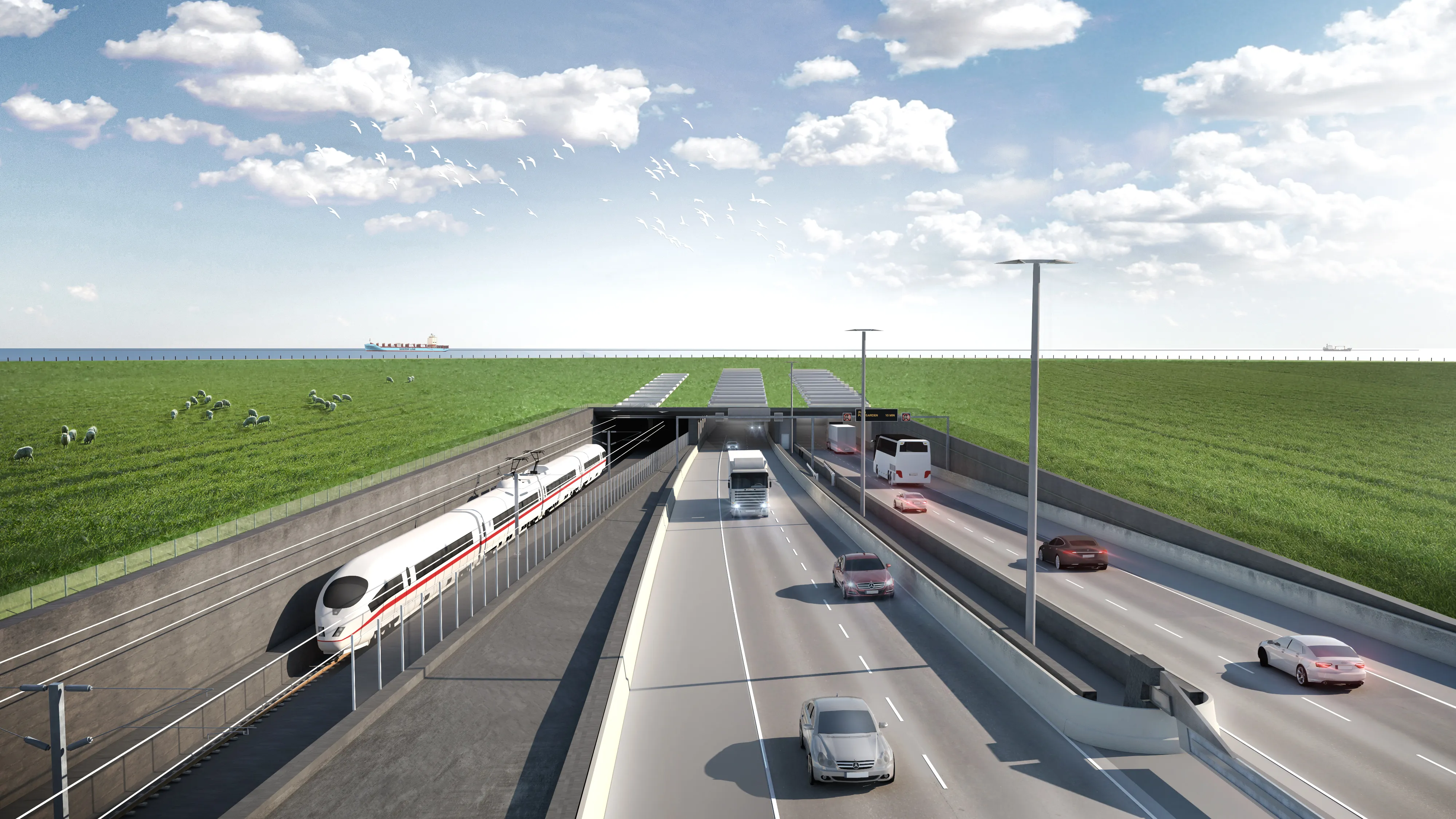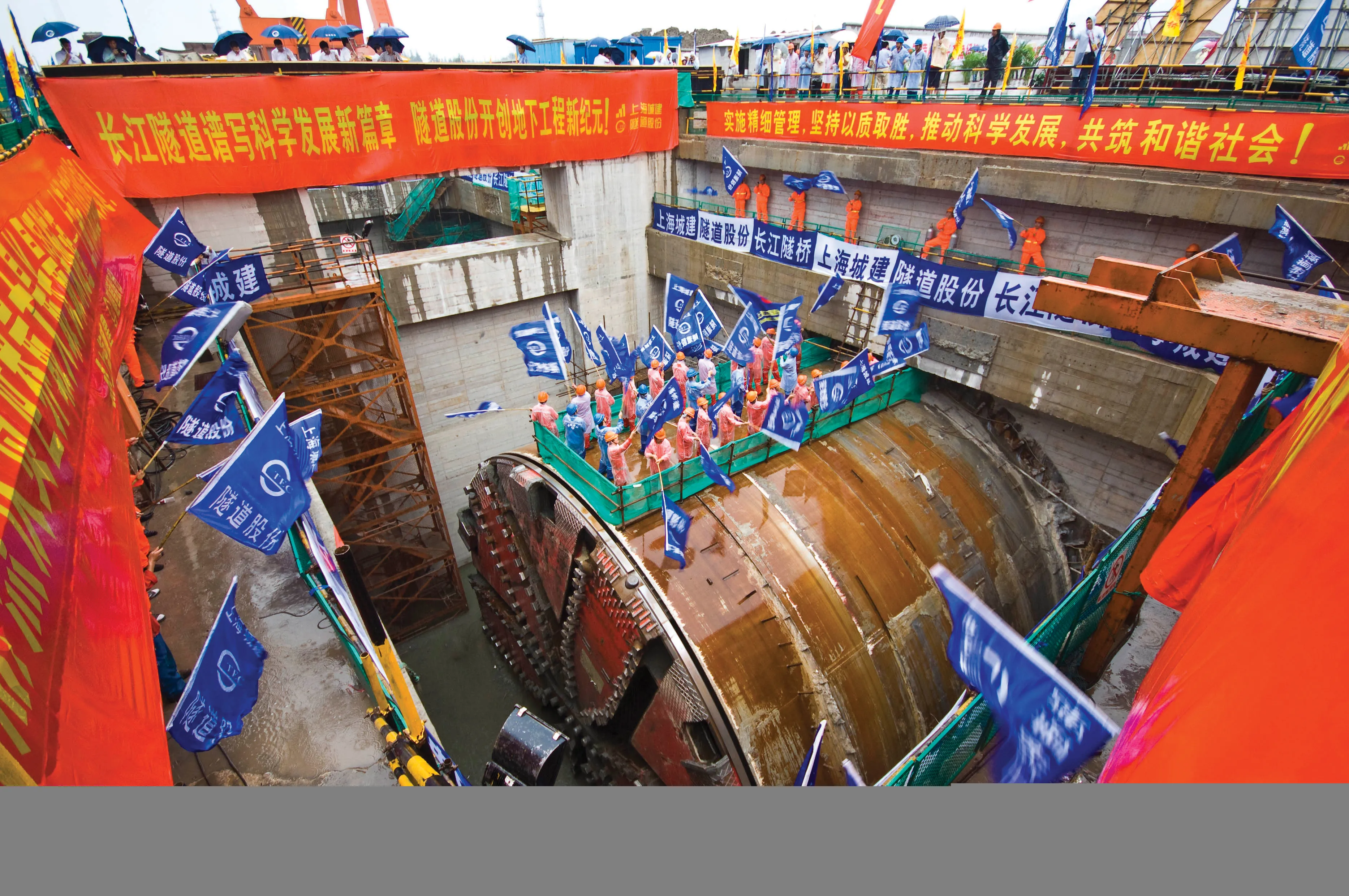
Formwork specialist Peri has completed delivery of the 10,000 tonnes of formwork needed for construction of tunnel sections for the 18km-long Fehmarnbelt project.
The road and rail Fehmarnbelt Tunnel will connect the Danish Island of Lolland and the German island of Fehmarn in the Baltic Sea and be the longest immersed tunnel in the world. Peri developed a formwork concept for the central production of the standard tunnel elements which make up the majority of the tunnel sections.
The last of the 12 ships delivering Peri’s formwork recently arrived at the tunnel element factory east of Rødbyhavn on Lolland island. When completed, each section will be floated out from the factory to be positioned and lowered into place on the seabed.
The 45m-wide immersed tunnel will consists of a total of five tunnel tubes. Two will be two-lane tubes for motor vehicles, two are single-lane tubes for rail traffic and one is a service and escape tube. Peri, based in Germany, is supplying formwork material for the 79 standard tunnel elements, each being 217m long and weighing around 73,000 tonnes.
Peri engineers decided on an incremental launching method with nine roughly 24m-long concreting sections. The solution forms the foundation for monolithic concreting, which reduces the risk of water penetration during tunnel operation.
In addition, a tunnel section is concreted without ties in the outer walls. At the same time, the approach means considerable savings in material and labour costs which reduces the use of raw materials, among other things.
The steel components of the Peri formwork solution were produced in Poland, Italy and at the Peri plant in Weißenhorn, Germany. Planning and execution of the delivery of the entire material took 12 ships and involved more than 250 trucks.
Work is done both on land and at sea. The tunnel elements are produced in a large factory with the size of 140 football fields. The standard tunnel elements are produced on site in a total of five separate production lines, in production halls built especially for the project combined with a working port. Each of the total of 79 standard elements is composed of nine concreting sections 45m wide and 9m high. Around 3,000m3 of concrete are used per concreting section, resulting in a weight of more than 8,000 tonnes each.
After the concreting process, the elements are fitted with bulkheads at both ends and sealed tightly. The basin containing the elements is then flooded with water in order to float the elements. They can then be tugged out into the open sea – the Fehmarnbelt - and lowered into position into a trench on the seabed.
Peri said that the use of its Maximo formwork reduces the need for staff thanks to its fast and simple handling. Peri Up scaffolding solutions ensure safe access to construction work at the construction site and Prokit Mesh Barriers protect staff from falls.
In addition to the technical challenges of what is Europe’s largest infrastructure project, compliance with environmental and social sustainability factors is key for the construction project. The 19 million cubic metres of material excavated from the bottom of the Fehmarnbelt will be reused for land reclamation areas and for the construction of overpasses, ramps and embankments in the immediate vicinity of the nearby ferry terminal.
Work on the Fehmarnbel tproject is being done by Femern Link Contractors.Companies involved in the consortium include VINCI Constructions Grands Projets (France), Aarsleff (Denmark), Max Bögl Stiftung (Germany), BAM Infra and BAM International (Holland), Wayss & Freytag Ingenieurbau (Germany), Solétanche-Bachy International (France), CFE (Belgium) and Dredging International (Belgium).
Meanwhile, Femern – wholly owned by Sund & Bælt and responsible for the Fehmarnbelt project – has launched a website that can assist the many cargo ships calling at the work harbours of the Fehmarnbelt project, one in Denmark and the other in Germany. The new harbour website include requirements for port calls, port layout and information about the tunnel construction and shipping traffic in the Fehmarnbelt.
Sund & Bælt also recently said that it has completed an environmental impact assessment of the tunnel element factory as a first step to hopefully making the site a permanent manufacturing base for other projects. These include future tunnels and wind farm infrastructure where large concrete casting is needed and which can be moved by sea to a construction site.







